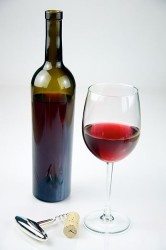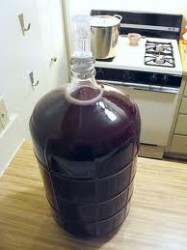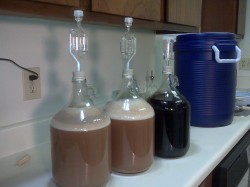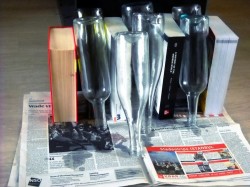
Wine has been enjoyed almost as long as civilization has existed, maybe longer. It makes sense that the ancients would have easily discovered the tastiness of rotted grapes, after all, food preservation had not had the chance to evolve yet, and when everything is going bad, you don’t stay picky for very long.

As someone who loves wine, cooking, and crafting, it was pretty much inevitable that I would eventually attempt to make my own wine. I had pretty low expectations for my first batch, and they were met. I made the usual mistakes: I rushed the process, made sure everything was clean, but not perfectly sanitized, and of course, I didn’t take the time to measure everything exactly.

Everything needs to be completely sterilized in order to prevent bacteria from growing. The wine making process uses yeast to turn juice into wine. The conditions required for yeast to ferment are also optimal for other bacteria to grow. This means that you need to start with a completely clean slate and regulate temperature and conditions exactly.

When I first thought about making wine, I wanted to go in full steam, squishing my own grapes and everything. I would definitely recommend starting from juice concentrate the first time, just so you can get the hang of the processes. Once you have the basics, you can put in the extra effort to start from grapes.
Making wine isn’t difficult, but it is a scientific process that requires precision. As with most crafts, you’ll get better the more times you try. Because of this, I would recommend making small batches until you get the hang of it. This way you won’t have as much sub-par wine to drink.
Kayla Stevens is a wine taster, maker, and writer who has allowed her hobby to take over her home in the form of a large collection of wine bottles, filters, and other wine making supplies. She writes about her experiences to help others make tastier wine with less hassle and errors than her adventures have involved.
0 Comments